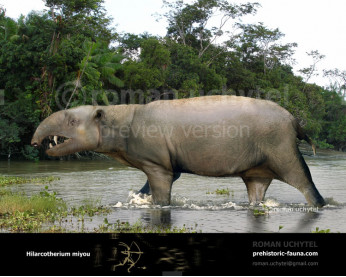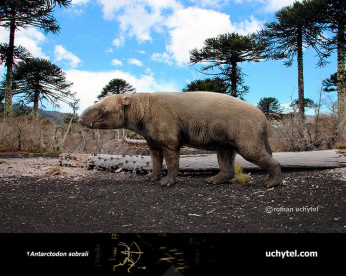Pyrotherium
108108Pyrotherium (Pyrotherium romeroi Ameghino, 1889)
Order: †Pyrotheria
Family: †Pyrotheriidae
Time period: during the Early Oligocene of South America
Size: 3,2 m in length, 150 cm in height, 1000 - 2500 kg of weight
Typical representative: Pyrotherium romeroi
Pyrotherium - extinct South American mammals of the superorder hoofed animals that lived in the Eocene and Oligocene. Pyrotherium have convergent similarity with the primitive Proboscidea, which was caused by the similarity of their ecological niches occupied.
Pyrotherium differed massive physique, columnar legs with short and wide toes, as well as a large head with a small trunk. The four upper and two lower incisor teeth, resembling tusks, were issued in advance. These animals reach 3 m in length and 1.5 m tall at the shoulders.
The name, which in Greek means «the fiery beast», was given because of the fact that the first fossils of Pyrotherium were found in sedimentary rocks of volcanic ash.
In comparison with other orders of the South American ungulates, Pyrotheriums were relatively not varied order. Period of their existence is also not particularly long. Pyrotherium kinship with other South American ungulates (Meridiungulata) is currently not clear. The structure of the tarsus does not indicate any obvious relationship with them. Most Pyrotherium’s tarsus is similar to Arsinoitherium’s tarsus, but it is unclear about evidence of relationship of these animals (who are representatives of different orders), or this similarity is dictated by a similar method of movement (it means - convergence).
Pyrotherium (Pyrotherium romeroi Ameghino, 1889)
Order: †Pyrotheria
Family: †Pyrotheriidae
Time period: during the Early Oligocene of South America
Size: 3,2 m in length, 150 cm in height, 1000 - 2500 kg of weight
Typical representative: Pyrotherium romeroi
Pyrotherium - extinct South American mammals of the superorder hoofed animals that lived in the Eocene and Oligocene. Pyrotherium have convergent similarity with the primitive Proboscidea, which was caused by the similarity of their ecological niches occupied.
Pyrotherium differed massive physique, columnar legs with short and wide toes, as well as a large head with a small trunk. The four upper and two lower incisor teeth, resembling tusks, were issued in advance. These animals reach 3 m in length and 1.5 m tall at the shoulders.
The name, which in Greek means «the fiery beast», was given because of the fact that the first fossils of Pyrotherium were found in sedimentary rocks of volcanic ash.
In comparison with other orders of the South American ungulates, Pyrotheriums were relatively not varied order. Period of their existence is also not particularly long. Pyrotherium kinship with other South American ungulates (Meridiungulata) is currently not clear. The structure of the tarsus does not indicate any obvious relationship with them. Most Pyrotherium’s tarsus is similar to Arsinoitherium’s tarsus, but it is unclear about evidence of relationship of these animals (who are representatives of different orders), or this similarity is dictated by a similar method of movement (it means - convergence).

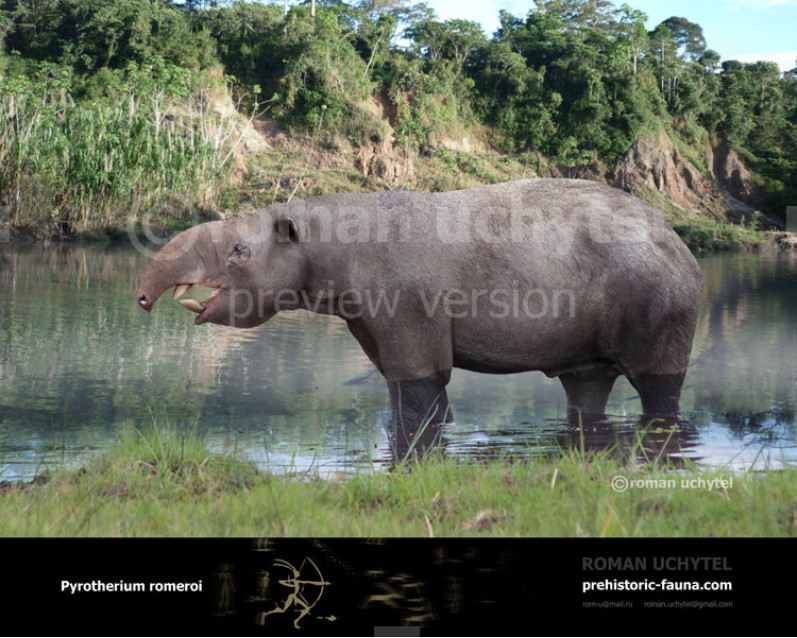
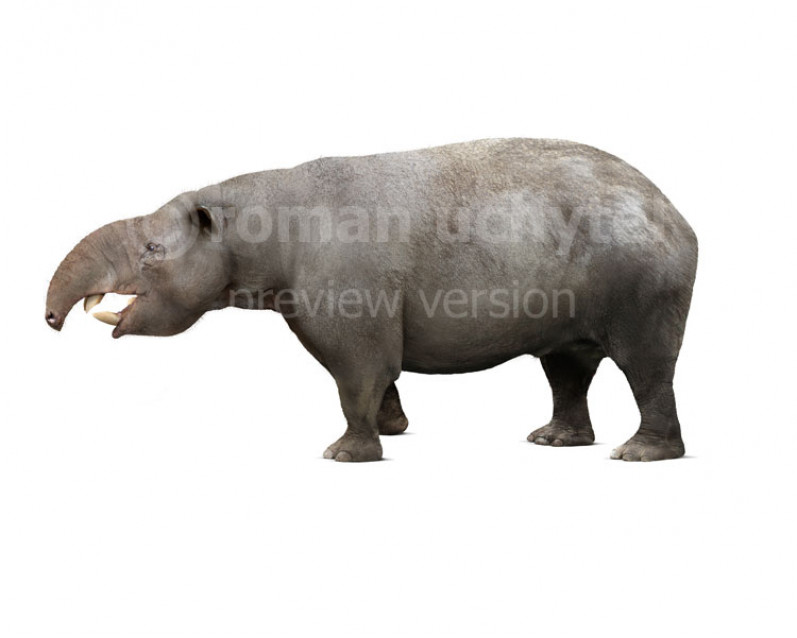
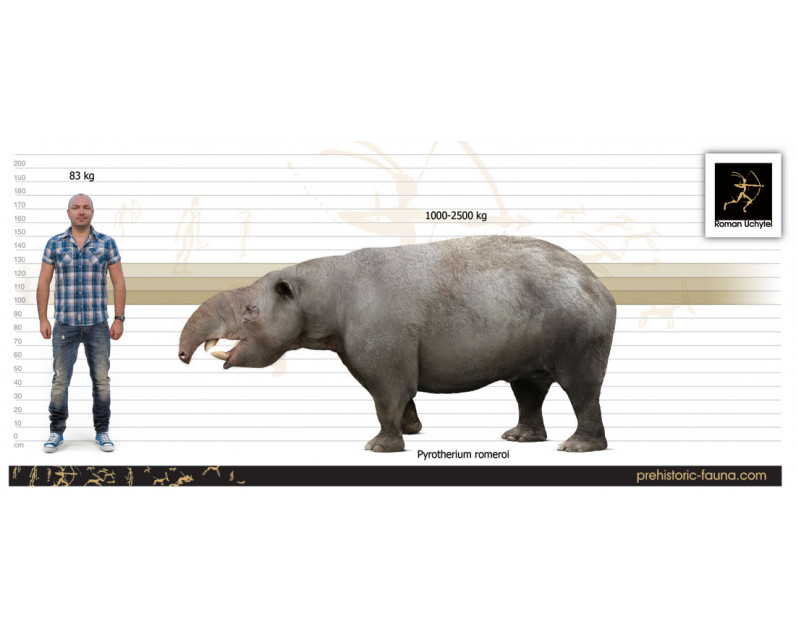



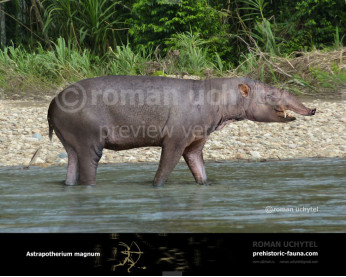
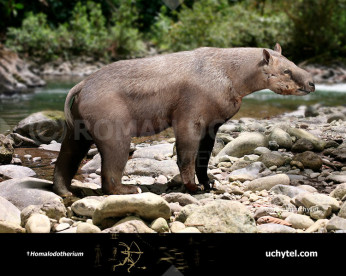
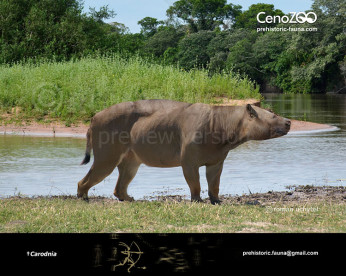
-346x277.jpg)
